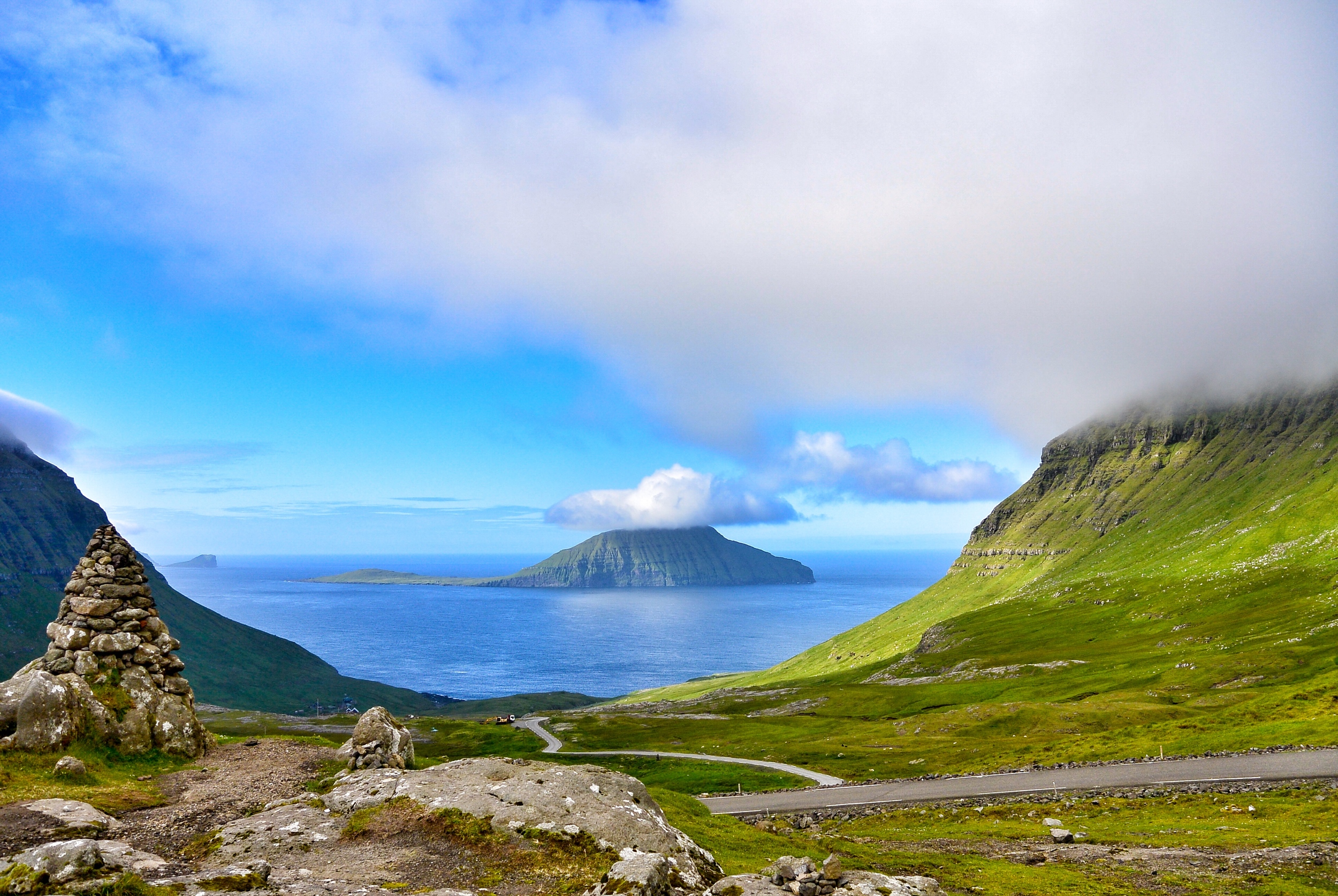A Tour Through Iceland's Unusual Landscapes
During my visit to Iceland this summer, I knew I wanted to see the wonderful and otherworldly landscapes that the country is famous for.
The best starting point to do so? Akureyri.
Akureyri doesn’t get as much tourism as Reykjavik, but it has a lot to offer. Often referred to as the “Capital of Northern Iceland”, the city lies at the end of the country’s longest fjord, Eyjafjörður. In Akureyri you’ll find a small town mentality, arts, culture, breathtaking scenery, and plenty of excursions to nearby natural wonders.
Since I only had a limited window of time to sightsee in northern Iceland, I had to make the most of it.
For my day exploring this area, I did a eight hour tour offered by FAB Travel. It included a visit to Goðafoss waterfall, Lake Mývatn, Dimmuborgir lava fields, Mývatn nature baths, and Námaskarð.
Goðafoss Waterfall
Our first stop was at Goðafoss, or Waterfall of the Gods. Goðafoss is considered to be one of the most stunning waterfalls in all of Iceland, and it was buzzing with tourists when we arrived.
Goðafoss gets it's name from a legend surrounding the falls that goes a little something like this:
Sometime around the year 999, a pagan priest named Þorgeir decided Christianity would become the official religion of Iceland. Shortly after his decision, it is said that he threw the idols of his pagan gods into a nearby waterfall, which many believe to be Goðafoss.
The thundering icy blue water crashes down from the 12 meter high falls. The sound? Loud, almost hypnotic, with a constant beating rhythm.
The vegetation around Goðafoss is grassy, containing mosses and lichens. The rocky banks twist the rushing water like a long, beautiful scar running through the green fields.
Lake Mývatn
After a 30-minute ride in the tour bus, we arrived at Lake Mývatn.
Now, the first thing you need to know about Lake Mývatn is that the name of this place literally translates to “Lake of the Midges”.
As our bus pulled over into a gravel parking lot, I saw them.
Millions of midges (tiny flies) were swarming the bus, landing on the windows, trying to find a way inside. At first I thought that this would completely ruin Lake Mývatn, because as soon as I stepped outside they surrounded us. I zipped up my jacket, pulled up the hood, and covered my face with my scarf, and yet they were still everywhere.
After a few minutes of trying to swat them away I learned that, unlike mosquitoes, these insects don’t bite, and as we started walking into the lake area the swarms seemed to become less ferocious.
In fact, the further we walked into the Lake Mývatn area, the less I was bothered by the flies. Instead, I was mesmerized by the scenery of the lake, surrounding wetlands, and the volcanic land forms.
Lake Mývatn was created by a large basaltic lava eruption some 2300 years ago. With repeated explosions in a number of locations, groups of craters built up and now dominate the landscape on the shores of the lake.
Geothermal steam vents can be seen rising in the distance.
Dimmuborgir Lava Fields
Just east of Lake Mývatn we stopped at Dimmuborgir, a huge area of oddly shaped lava fields. The name Dimmuborgir roughly translates to “dark castle”. The area is composed of various volcanic caves and strange rock formations, reminiscent of an ancient collapsed citadel, hence the name.
Dimmuborgir is said to be the home of the Icelandic Yule Lads, thirteen brothers that love to sing, dance, tell funny stories, and trick people. Each year around the holidays, children are encouraged to search Dimmuborgir for the Yule lads.
Mývatn Nature Baths
Next up was an option to take a dip in the Mývatn nature baths, a smaller version of the famous Blue Lagoon. I passed on this part because I thought our 40-minute time frame to enjoy the baths was cutting it a little too short.
Some of my family members chose to relax in the baths and their verdict was this: the Mývatn nature baths are quieter, cheaper, and have a nicer view of the surrounding landscape than the Blue Lagoon. All around a better experience despite our short amount of time.
Námaskarð
This was the best part of my day. I always wanted to see the strange, natural landscapes of Iceland, but I had no idea they would be this incredible!
Námaskarð is only a 15-minute drive away from the green, moist landscape of the Lake Mývatn area, and yet it feels like a completely different planet.
The lush greens and clear blues of Lake Mývatn are replaced with burnt oranges, earthy browns, and ashy beige. The wet, rich landscape of the lake is replaced with a dry cracked earth, uninhabitable to most species.
As soon as I stepped out of the bus I could smell the sulfur from the steam vents. The thick, pungent aroma, was spread around by the warm breeze. The distinct scent seeped into my skin, hair, and clothing, but it didn't matter because this was the Iceland I had been waiting to see!
Bubbling mud pots and colorful patterns on the earth ...
... made me feel like I was on Mars!
If you've got more time to kill than we did there are trails that lead up to the ridge above the steaming vents, which I can imagine would provide a spectacular view on the whole area.
My day discovering this region of Iceland was pleasantly bizarre and surreal, and I finally got to explore some of the more unusual landscapes of Iceland. Of course, the abnormally sunny and warm weather didn't hurt either!
This tour ended up being one of my favorite memories from Iceland, and I really can't recommend it highly enough.
Get the inside scoop on must-see attractions with Lonely Planet's Iceland Guide!


